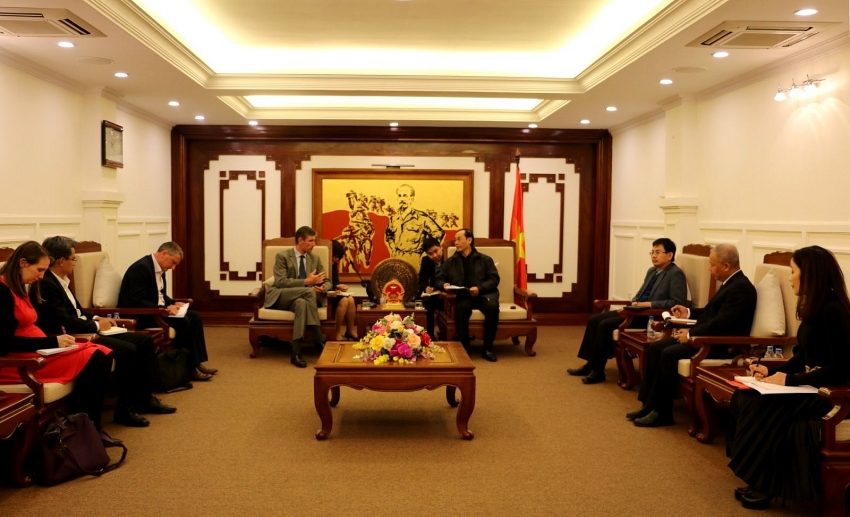UK investors eye aviation projects in Vietnam
 |
| Deputy Minister of Transport held talks with UK Ambassador Giles Lever |
At last week's meeting with Deputy Minister of Transport Le Dinh Tho, British Ambassador to Vietnam Giles Lever said that the Long Thanh International Airport project and the projects to expand Tan Son Nhat International Airport and Noi Bai International Airport are among the targets of UK companies, including consultancy service providers.
"UK businesses are seeking opportunities to join the building of the feasibility study of the Long Thanh International Airport project,” said Lever.
In addition, they are also keen on urban railway projects.
Tho, in response, said that the Ministry of Transport welcomed UK firms to join the Long Thanh International Airport project. As planned, Airports Corporation of Vietnam (ACV), the investor of this project, will begin to receive bidding documents from February 23, 2018.
In addition to UK businesses, the $16-billion Long Thanh International Airport project and the project to expansion of Tan Son Nhat International Airport are on the radars of many international groups. Earlier, a number of investors from the US, Japan, and South Korea expressed interest in these projects.
At present, MoT is selecting consultants for the feasibility study, which is expected to be carried out in 2018-2019 to be then submitted to the National Assembly for approval.
When the feasibility study is approved, investment models, including state investment and PPP, for sub-projects will be decided. Investors will be then selected based on certain criteria through international bidding.
MoT aims to kick-off the project construction in 2019 and complete it in 2022 so that the project can be put into operation in early 2023. The 5,000-hectare project will be developed in three phases, with the first costing $5.45 billion and finished in 2025 at the latest. This phase will have a capacity of 25 million passengers and 1.32 million tonnes of cargo a year.
The airport will be able to handle 100 million passengers and five million tonnes of cargo annually after the third phase is completed.
What the stars mean:
★ Poor ★ ★ Promising ★★★ Good ★★★★ Very good ★★★★★ Exceptional
 Tag:
Tag:
Related Contents
Latest News
More News
- PM urges Ho Chi Minh City to innovate and remain Vietnam’s economic locomotive (November 26, 2025 | 15:29)
- Experts chart Vietnam's digital finance path: high hopes, high stakes (November 14, 2025 | 10:56)
- Vietnam’s seafood imports surge 30 per cent in first 10 months (November 10, 2025 | 19:35)
- Vietnam’s durian exports hit $1 billion milestone (October 30, 2025 | 17:41)
- Beyond borders: Sunhouse and new era of Vietnamese brands on Amazon (October 28, 2025 | 10:46)
- Record-breaking trade fair set to open in Hanoi (October 15, 2025 | 15:59)
- Timber sector seeks solutions to VAT refunds (October 14, 2025 | 18:58)
- Tether explores investment prospects in Vietnam’s digital asset sector (October 10, 2025 | 18:09)
- Vietnamese investors pour nearly $847 million into overseas markets in nine months (October 08, 2025 | 18:42)
- Vietnam amends Law on Civil Aviation to create drive airport investment (October 03, 2025 | 18:29)



























 Mobile Version
Mobile Version